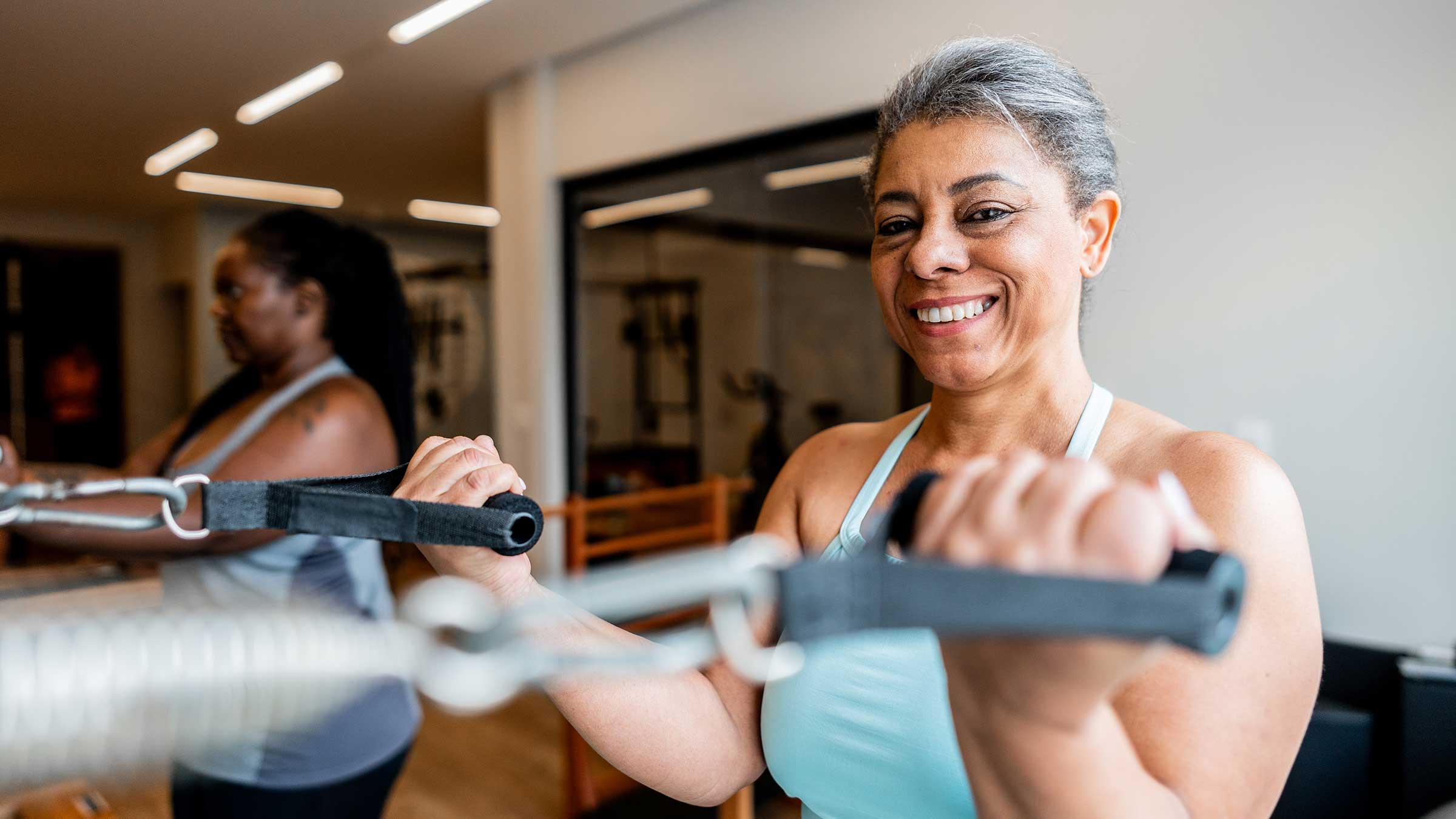
Your goal might be to build muscle.
But what if, no matter how many months you’ve been lifting weights, you don’t notice any changes in muscle growth?
It’s possible a supplement called creatine could help you build more muscle.
Where is creatine?
Creatine occurs naturally in your muscles, and a small amount is in your brain.
About half your body’s supply of creatine comes from what you eat, specifically meats, dairy products and seafood. The other half is made in your liver, pancreas and kidneys.
What does creatine do in the body?
A popular supplement among athletes, creatine helps keep your muscles stay supplied with energy and helps them contract.
Creatine can:
- Help build and repair muscle
- Improve workouts
- Speed your recovery after workouts
- Increase water retention, improving muscle growth
Creatine is for more than just athletes
Creatine is popular with strength athletes, but anyone wanting to build muscle might benefit from it.
As you get older, it’s harder to build muscle. Muscles become less efficient at turning the protein you eat into new muscle. That’s why creatine may be appealing.
Men usually benefit more from creatine than women
Women can benefit from creatine, but women tend to not benefit as much as men do from taking the supplement. It’s not clear why. Studies indicate only that hormonal and physiological differences between men and women may be why.
Creatine supports brain health
Some studies show that creatine can improve short-term memory and reasoning, as well as recovery from concussions. Creatine may also help with dementia, but more studies are needed to determine that.
How much creatine should I take?
Creatine monohydrate is the best form of it to take. That’s the type you’ll see most often on the market.
Some people who take creatine start with a “loading phase” of 20 grams daily for five to seven days. Afterward, they take three to five grams a day and continue at that amount.
During the loading phase, it’s best to split your daily dose into four separate servings throughout the day rather than take it all at once. The loading phase is not required. If you skip it, it just might take a little more time, possibly up to four weeks, to notice a difference.
Eating a carb-based or protein-based meal with the supplement can help you absorb it better.
Are there risks to taking creatine?
Creatine is generally considered safe for most people when taken in recommended doses. However, it can cause some side effects, especially if it's taken in excess, or if your body is sensitive to it.
Potential side effects to creatine include:
- Water retention: Creatine causes your muscles to retain water, which can lead to weight gain or bloating. Often, this is temporary and typically resolves after you stop taking creatine.
- Gastrointestinal issues: Some people experience stomach discomfort, bloating, diarrhea or cramping, especially when taking high doses of creatine.
- Kidney stress: There are concerns that long-term creatine use, especially in large doses, could strain the kidneys, particularly if you have a pre-existing kidney condition. However, research in healthy individuals hasn’t shown significant kidney damage when taken in recommended doses.
- Dehydration: Since creatine draws water into your muscles, you may be more prone to dehydration. It's important to drink plenty of water while taking creatine.
- Muscle cramps: Although not common, some people report muscle cramps or strains when taking creatine, possibly due to dehydration or imbalances in electrolytes.
- Potential weight gain: Water retention can cause a slight increase in weight, which might be mistaken as fat gain, but it's typically just temporary water weight.
Why building muscle is important
With or without creatine, building and maintaining muscle mass can make a big difference in your health and possibly your appearance as well. Muscle mass offers benefits that extend well beyond the gym and can improve your quality of life in so many ways.
Besides boosting your sports performance, building and maintaining muscle mass leads to improvements in:
- Strength: Building muscle increases your strength, making it easier to carry groceries, lift heavy objects or even climb stairs.
- Metabolism: The more muscle you build, the more calories your body burns throughout the day.
- Posture: Strengthening muscles, particularly in your core, back and shoulders, can improve your posture. This reduces the likelihood of slouching and associated back pain.
- Joint protection: Building muscle around your joints helps stabilize them, reducing the risk of injuries, especially to the knees, hips and lower back. Strong muscles act as a protective shield for your bones and joints during physical activity.
- Bone density: Strength training helps bones grow, leading to higher bone density. This is especially important as we age, since it can help prevent osteoporosis and reduce the risk of fractures.
- Insulin sensitivity: Building muscle can help your body respond better to insulin, which helps control your blood sugar levels. This is especially beneficial for preventing or managing type 2 diabetes.
- Mental health: Exercise, including muscle-building activities, has been shown to release endorphins, which can reduce stress, anxiety and depression.
Over time, maintaining muscle mass can help you live longer and reduce your risk of chronic diseases, such as heart disease and certain cancers. It can also help you stay independent as you get older.

Take the first steps to a healthier lifestyle
Ditch the fads and start taking real steps to improving your health with the nutrition and dietary experts from Ohio State.
Start today




